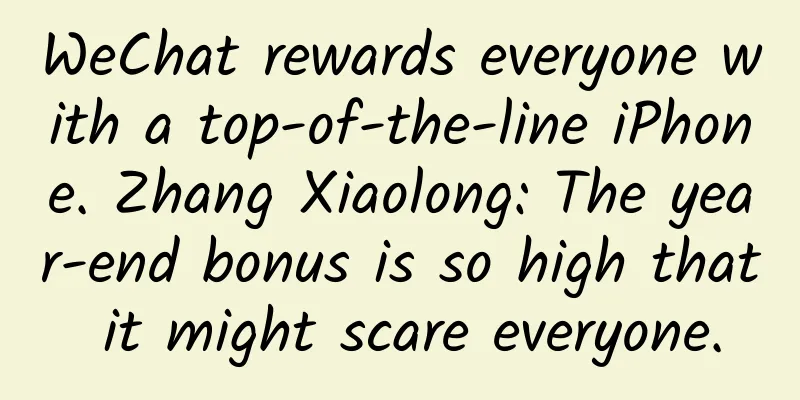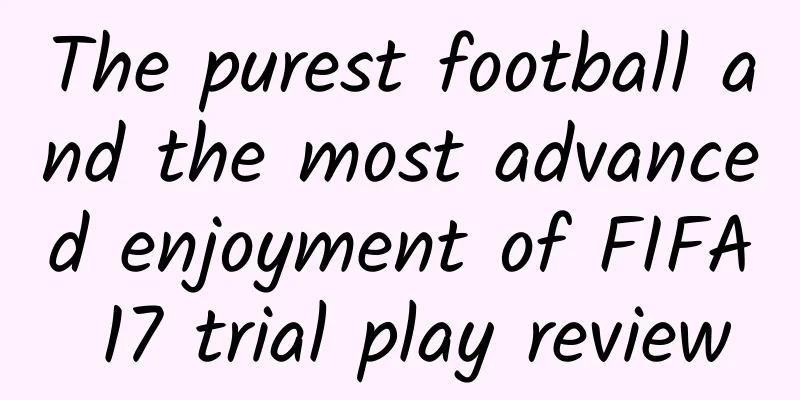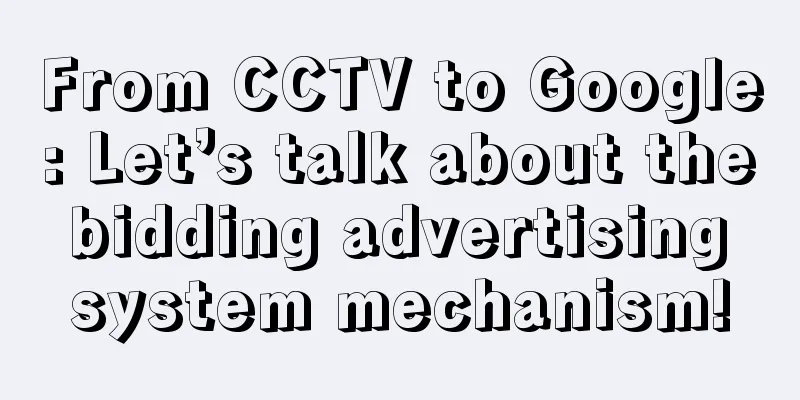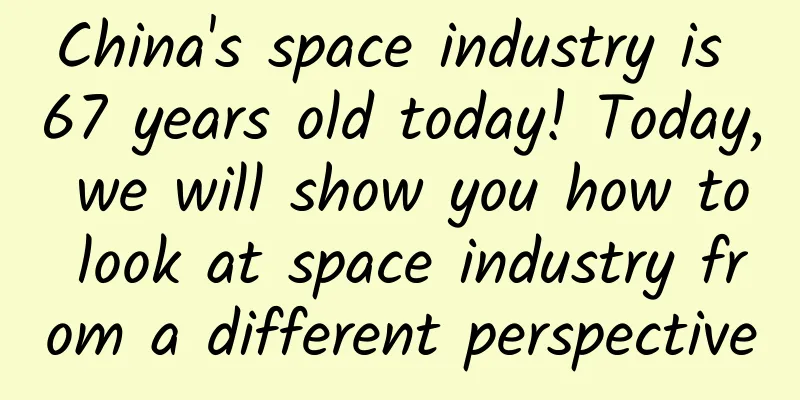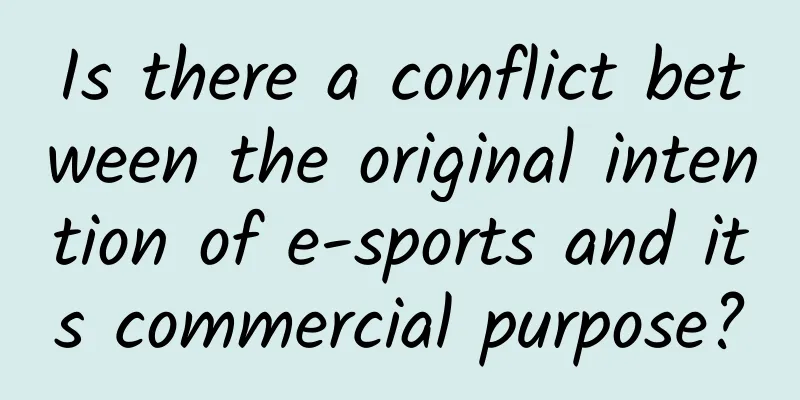To game CPs: Think twice before choosing a publisher
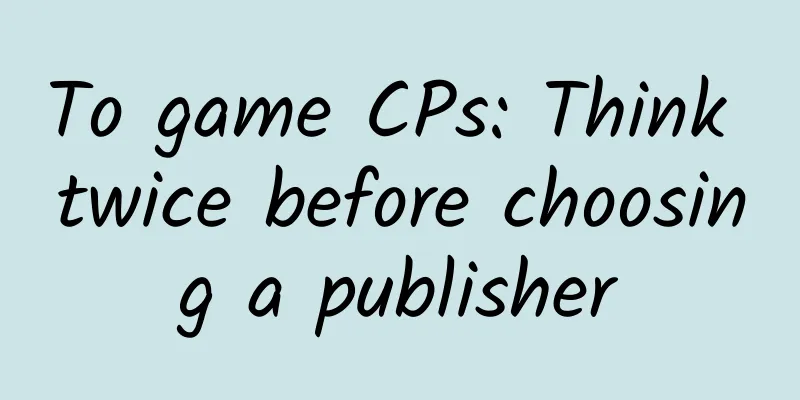
|
The mobile game industry is always changing with each passing day. Time has come to the fourth quarter of 2015. The most obvious change this year is the obvious decline of mobile game publishers. In the first half of 2014, there were still successful products such as "Qin's Moon" and "Dota Legend" made by publishers to support the market. In 2015, it seems that such products have become a luxury. However, does this mean that publishers will exit the stage of history, or that CPs no longer need to publish games? The answer is obviously no. In fact, due to the sudden explosion of the mobile game field in the past few years, the rapid influx of practitioners and entrepreneurs has resulted in a lot of "inventory" in the mobile game industry from the first few years that still needs the help of publishers. For these teams, publishers are still indispensable. However, times have changed, and the mobile game industry has developed more rapidly compared to the first two years. So, for today's CPs, apart from the basic factor of "money", what else should they pay attention to when choosing a publisher? 1. Who is behind the publisher? Who is behind the publishers? This is a new phenomenon that the mobile game industry needs to pay attention to in 2014 and 2015. To put it bluntly, it mainly refers to who is behind the current batch of executives who have left their original channels and well-known publishers to start their own businesses. Frankly speaking, this question can be big or small. In a narrow sense, it refers to the simple question of "who are the investors behind the publisher". In a broad sense, it actually refers to which circle the publisher is in and what role it plays in it. As the saying goes, "where there are people, there are rivers and lakes." The difference between executives' re-entrepreneurship in the mobile game era and executives' re-entrepreneurship in the PC game era is that, due to the difference in gameplay between mobile games and PC games, and the different position of publishers in the entire business chain compared to the PC game era, it is difficult for executives in the PC game era to get a VC investment and have the opportunity to become a dark horse in the industry. Today, the group of executives who have started businesses in the mobile game industry - if you are interested, you may wish to check it out. The capital behind them is often invested in an entire business chain, in which the publisher is only one link. To put it bluntly, the role he plays in it is limited. To you as a CP, he is God, but to the publisher itself, the God behind him is someone else. After all, it is not convenient to explain this matter too clearly. But from the perspective of CP, the importance of understanding this matter lies in the fact that they have a complete chain of interests, including who they get the product from? Who they get the volume from? How can they start? What if they can't start? The first thing you need to evaluate is whether the interest chain behind you and him is consistent. This is a long story, but if you break it down, it is actually first, whether your product is consistent with the user attributes of the channel where he mainly gets the volume; second, whether your product quality is really good enough compared to other CPs in this circle, which may determine the value of your product in the hands of the publisher; third, the publisher has its own interests based on the role it plays in the business chain, and whether your goals can be consistent with them. We wrote this paragraph not to disrespect the emerging publishers, but for CPs, figuring out who is behind the publisher and the role he plays in it is actually something you need to figure out when choosing a publisher in 2015, especially a new publisher. 2. Are the publisher’s interests aligned with yours? Are the interests of the publisher and yours consistent? This is a question that many CPs initially overlook, because they are often confused by the licensing fee and the "promised promotion fee of XXXX million" stipulated in the contract. But in fact, whether the interests of the publisher and the CP are consistent often determines the final operation strategy of the product, which is precisely more valuable than tens of millions of promotion fees. As a CP, you want to make 80 million in revenue in two years, but as a publisher, you want to make 200 million in revenue in half a year for your own profit. This is the contradiction between CP and publisher. Don't laugh, from 2013 to 2015, Longhubao saw many teams fighting with publishers because of this. You are an SLG game, and what you want to do is to slowly increase the number of users, with low ARPU and high DAU, but the publisher has its own needs and wants high profits. In this case, it is best to talk it out. If you really can't reach an agreement, then it is best to give up as soon as possible, because the goals often determine the operating strategies of both parties, as well as the subsequent game revisions. If the goals of both parties are not consistent, starting these subsequent actions will only cause conflicts. From 2013 to 2015, Longhubao has seen many cases where products died because of this. Of course, the above situation is just one situation. Regarding the common interests of publishers and CPs, there is another situation where publishers need to achieve certain goals in the short term due to capital considerations. For example, some publishers need to create high cash flow rather than profits in the first year due to capital considerations. At this time, they value long-term stable cash flow; or based on the purpose of high valuation in the capital market, they need to buy a CP or take a product to inject business into the shell of an already valued company - a typical example in this regard may be Hero Entertainment's 20 billion, and at this time, the performance pressure that the CP itself needs to bear will increase invisibly. Therefore, in this case, CP is better to weigh it first, can you take on this responsibility? Examples: In early 2014, Company T represented a game that topped the local rankings from Company X in Japan. When signing the contract, both parties stipulated that "the promotion fee should be no less than 10 million yuan." However, frictions continued after the cooperation began. This was because Company X in Japan believed, based on its operating experience in Japan, that the number of online users and payment for this game in Japan was not high at the beginning, and that it was gradually promoted by word of mouth, and the same strategy should be used in China. However, Company T did not agree with this strategy, which led to the subsequent disagreement on product revision and promotion. After the first test of this product in 2014, Company X was quite satisfied with the results and soon issued the first bonus to employees. However, Company T believed that the turnover should be higher and it would not be surprising if it exceeded 100 million. This difference in starting points led to constant friction between the two parties and even affected subsequent updates and operations. In the end, the product ended up being shut down in China. 3. How many product reserves does the publisher have? When communicating with many CPs, Longhubao found that their final choice of publisher often depends on a piece of licensing fee, and their reason is convincing - this price is comfortable, I can't refuse it. Indeed, after a period of hard work, seeing a licensing fee contract of more than 10 million on paper (note: on paper), I'm afraid no one would not be tempted - not to mention anything else, because you have suffered too much in the early stage. But it is precisely for this reason that you should examine the above question, that is, how many products does the publisher have in reserve? There are two aspects to this question: one is how many products the publisher currently has, and the other is how many products of the same type as yours the publisher has in hand. This question is neither difficult nor easy to find out. It is not difficult because many works have actually been officially announced when they are signed, and it is not difficult to find information on the official website. It is difficult because it is true that not every company will post every signed product on the official website. But the significance of examining this issue clearly is that it determines the purpose of the publisher signing your product. To put it more bluntly, it is related to when your product will be tested? How much effort will the publisher put into promoting it? This is because today's publishers will more or less prepare products for at least one quarter in advance. Generally, it is normal to prepare ten products per month on average. Some first-tier publishers have more than 60 products in reserve since the beginning of the year. For CPs, waiting in line for the product to be launched is really "waiting until the flowers wither". But the problem is that in most cases, the licensing fees signed by CPs are signed in a 433 structure, that is, the first payment is 40% in one payment, the second payment is 30% after the internal test is completed, and the last payment is paid after the product is revised and officially operated; and the current situation is that when the publisher has a large number of product reserves, it is obviously impossible to promote multiple products at one time, but if you don't test it, you will definitely not be paid. At this time, you can either start a new project or wait endlessly. So from this point of view, it is particularly important to understand the product reserves of the publisher. Even if you don’t know how many products the publisher currently has in stock, you must know how many products of the same type he has. This question determines the role you play in it. Examples: In fact, a relatively successful case in this regard is Lilith Technology's choice of Zhongqing Longtu. When Zhongqing Longtu first signed "Dota Legend", no one in the company paid more attention to it except Wang Yanzhi, who was in charge of mobile games. Longhubao once heard a saying that Wang Yanzhi had a limited budget when promoting "Dota Legend" at the beginning, so he had to raise 10 million yuan in promotion budget from outside, and the final result was that he succeeded. If this is true, it is not difficult to find out by flashing back to the time when "Dota Legend" was launched. First, Zhongqing Longtu did not have many products in the mobile game field at that time. In addition to "Dota Legend", it seems that there is only one card game with the theme of Naruto. Second, combined with the time background, Zhongqing Longtu was also eager to push the product online to generate revenue. These two points, combined with the previous gossip, actually tied the interests of Longtu and Lilith together. "Dota Legend" was the key product of Longtu Games at that time, and Longtu Games had to put all the cards in its hands on "Dota Legend". Further speaking from this premise, "Dota Legend" has been placed on the desks of publishers such as Touch and Kunlun before, and many people have predicted what would happen if Touch and Kunlun took over "Dota Legend". However, combined with the previous inference and the product reserves of these companies at the time, it is not difficult to find that they may find it difficult to promote "Dota Legend" with all their resources like Longtu Games. Therefore, "Dota Legend" may be a small success in the hands of the latter two, but can it achieve the same success as today? This is a question worth thinking about. "Papa Three Kingdoms" in Feiliu's hands is actually an obvious reference. 4. Market capabilities of issuers There are many evaluation criteria for market capability. For most CPs, the criteria for evaluating publishers’ market capability today seem to be based on how much advertising they have done for their past products. But in fact, the evaluation of publishers’ market capability should be completed from multiple evaluation criteria, such as how much money the publisher has? In what fields is the publisher good at making a breakthrough? Will the publisher do brand promotion, etc. It is difficult to prioritize the above points. If Longhubao must pick the most important one, Longhubao thinks that money is secondary. What really matters is the publisher’s expertise in what field to make a breakthrough. This question is extremely critical. It is an old saying that competition in the mobile game industry is becoming increasingly fierce. In the same field, there are dozens or even hundreds of games competing with you. In this case, whether the publisher is good at making a breakthrough in the field to which your product belongs becomes a key issue - after all, this is a question about whether your product can find exclusive users, and it determines your life or death. In this regard, different publishers are different - for many CPs, they often refer to the brand effect of the publisher and prefer some big publishers, but what Longhubao wants to say is that for different products, you still need to classify the publishers. Because different publishers are good at different fields, even if a publisher who has made successful products in the past enters a field he is not good at, it is still a dead end. In the first half of this year, Longhubao interviewed a former head of a first-tier domestic publisher and asked him a question: "I heard that you also looked at XX product at first, but you didn't want it, and finally someone else made it. Why didn't you want it at the time?" The publisher nodded and said to Longhubao: "To be honest, I didn't know how to promote this kind of two-dimensional product at the time, so I didn't want it." The reason why I mentioned the above example is actually to tell you that different publishers, based on their long-term experience, genes and personnel, are good at different fields. For CP, you should be more careful in this regard. In addition to money, you should also consider the publisher's explosive promotion capabilities in different fields. To put it simply, if you are making a female-oriented game like "Nuannuan Around the World", don't look for a publisher that has been making hardcore SLG projects for many years. These are two completely different fields. Examples: Although Shanda is no longer as powerful as it once was, in early 2013, its promotion of "Diffusive Million Arthur" was still a successful example in the relevant user field. Today, people's impression of that promotion is more about "PC-style marketing", but in fact, Shanda still did a relatively detailed study of the user groups of "Diffusive Million Arthur" at that time. This is reflected in its focus on customer groups. In addition to placing a large number of advertisements in a domestic old media in the PC-game era to build the brand, it also invested a large amount of resources in a domestic media community that has many years of experience and accumulation in Japanese and Korean information and users, and cooperated with the media community to carry out a series of activities such as issuing numbers and gift packages; at the same time, combined with the "opinion leaders" in the Japanese and Korean game fields accumulated by the community over the years, and cooperated with Weibo and other activities to create momentum, "Diffusive Million Arthur" quickly blossomed and successfully acquired a group of core users of its own. 5. Publisher’s channel relationships What are the distributor's channel relationships? This is an extremely important issue, but it is easily overlooked by CPs. In the process of communicating with CPs, Longhubao found that most CPs have a "polarized" understanding of publisher-channel relationships. One type does not worry at all, because they believe that publishers are just there to advertise, so they have no idea about channel relationships; the other type is slightly better, but they also believe that channels and publishers are just nodding acquaintances, and it's as simple as paying money and providing volume. In fact, there are indeed many things that cannot be put on the table in the relationship between publishers and channels, but it is definitely not "paying money to do things" as some CPs think. From the perspective of CP, what does the quality of the publisher-channel relationship mean to CP? Most of the CP products released today are B-level, which will not die but will not be successful. There are hundreds of such product channels every day, and many of them are connected. So when the product quality is equal, there is no big highlight, and there is no IP, if the publisher has a good relationship with the channel, it is very likely that out of personal relationship, it can get you relatively better promotion resources or even ratings. Another important meaning of understanding the relationship between publishers and channels is that different channels have different users. In combination with the CP's own products, choosing according to the relationship between the publisher and the channel will also help further promote its products. To give the simplest example, you made a heavy ARPG game, but the relationship between the publisher you chose and UC is a mess. In this case, unless the product quality is very good, I think you can't expect anything. Examples: Mr. C, the former head of mobile games at S Company, is a classic negative example in this regard. As the head of a publisher, Mr. C has an outspoken personality. In addition, S Company has relatively successful experience in the field of PC and web games, which makes him more outspoken in front of channels. The final result of this outspokenness is that Mr. C has offended almost all of the seven major channels. Mr. C's behavior soon received a response. At the end of that year, S Company promoted an RPG game. Since the previous channel relationship had basically entered a cold war state, several major Android channels almost unanimously not only did not give this product a position, but some channels even refused to access the product. Faced with this situation, Mr. C did not think about repairing the relationship, but simply relied on iOS and the official website for promotion. The final result was terrible, and shortly after the failure of this product, Mr. C also left S Company sadly. |
<<: iOS9 Learning Series: MapKit Transit
>>: Should I choose Blocks or Delegates during development?
Recommend
Pinduoduo’s method of improving user conversion rate!
Pinduoduo, an e-commerce company, achieved revenu...
Why were the gravitational waves predicted by Einstein detected only a hundred years later?
The dream of archaeologists is to record the soun...
Is the ultimate goal of the virus to kill the host or to coexist with the host?
Viruses are 100 times smaller than bacteria, whic...
Things you need to know about app titles and descriptions
[[134632]] App Store Optimization (ASO) is a set ...
Google is rumored to be replacing Android and Chrome OS with Fuchsia within 5 years
[[237256]] Beijing time, July 20, morning news, a...
Is the world chaotic? Wandering between order and disorder
Yang Mingzhe Introduction: Imagine we throw a sto...
Brand marketing methods of Zhihu promotion platform!
Every year, many customers use Zhihu promotion pl...
Evergrande Auto Financial Report: As of June 30, 2023, Evergrande Auto's total assets were 42.852 billion yuan and its total liabilities were 75.692 billion yuan
Recently, Evergrande Auto released its 2023 inter...
Introduction to vivo App Store CPD Promotion Platform
CPD Promotion Platform Introduction The vivo App ...
A 24-year-old boy contracted fungal pneumonia after smelling his unwashed socks! Are “stinky socks” so toxic?
Recently, a netizen named "Haiyan" from...
Using Kotlin to efficiently develop Android App (I)
[[227035]] Star Wars Soldiers.jpg background Rece...
To solve the "bottleneck" problem in the seed industry, how far has my country's biological breeding industrialization progressed?
Recently, the Ministry of Agriculture and Rural A...
Pensions in all 31 provinces have increased! How much has it increased specifically? Attached is a list of the latest price increases in various regions!
As of now, the 2020 pension increase has ended, a...
DeepSeek provides its own prompts, with templates and examples, making it more efficient to use!
Recently, the artificial intelligence system Deep...
Omdia: Microsoft will become the world's largest GPU buyer in 2024, purchasing 485,000 Nvidia Hopper chips
The world's largest buyer of NVIDIA GPUs in 2...

